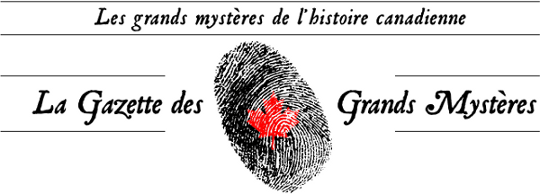Great Unsolved Mysteries in Canadian History:
|
|
Happy Spring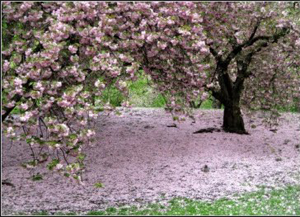
Happy Spring from the team at the Great Unsolved Mysteries in Canadian History (GUMICH) project, based at the University of Victoria. Welcome to the latest edition of the new GUMICH Gazette, a thrice-yearly newsletter to help keep educators up to date on news and tips for teaching with historical mysteries. 
Song for Canadian Music Week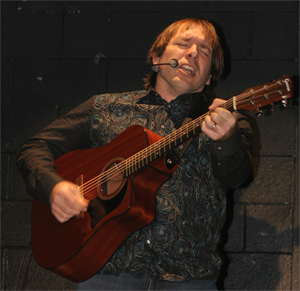
Want to mix music with mystery? Canadian Music Week is March 19-24. If your class is studying Jerome: The Mystery Man of Baie Sainte-Marie, you could introduce your students to the song Fallen Angels by the talented Boulianne. The Nova Scotian musician fronts a band called Blou, creating a unique style of Acadian music he calls "Acadico." In 2012 Blou won the Fan's Choice Entertainer of the Year at the East Coast Music Awards. Patrice produced both an English and French version of his haunting song about The Mystery Man. Teaching Tools – New MysteryQuests
Be sure to check out our new MysteryQuests! Thanks to financial support from the Social Sciences and Humanities Research Council in 2012-13, we were able to develop nine new MysteryQuests, three for each of the following Mysteries: The Redpath Mansion Mystery, Death on a Painted Lake: The Tom Thomson Tragedy, and Death of a Diplomat: Herbert Norman & the Cold War. The Critical Thinking Consortium created the new MysteryQuests for the Great Unsolved Mysteries in Canadian History Project, working with historical researchers Annmarie Adams (McGill University), Gregory Klages (University of Guelph-Humber) and Larry Hannant (Camosun College) and our co-director Ruth Sandwell (Ontario Institute for Studies in Education). You can find these new MysteryQuests – and all of the original thirty quests – at MysteryQuests.ca . Teaching Tools: Nine New Interactive Whiteboards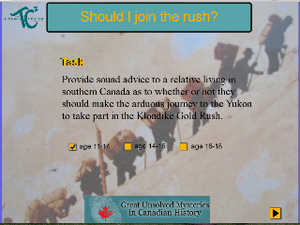
Funding from the Social Sciences and Humanities Research Council also enabled us to create some new interactive whiteboards. You can download them for free from our website – and please send along your feedback! These new whiteboards were developed by a team of students from the Ontario Institute for Studies in Education at the University of Toronto under the guidance of Garfield Gini-Newman, with design input from Mary Abbott. Each of the whiteboards is designed for use with one of our popular mystery websites. You can use the whiteboards (currently available only in English), with either Promethean Boards or SMART Notebook software. You will first need to download the appropriate software to access the whiteboards. Featured Primary SourceFrom the mystery Aurore! The Mystery of the Martyred Child: 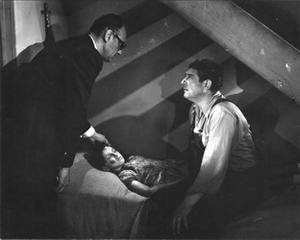
Testimony of Oréus Mailhot, Justice of the Peace, February 17, 1920 Fortierville, Quebec: In July 1919 Monsieur Thelesphore Gagnon as well as Madame Thelesphore Gagnon came to my home, to have their little daughter Aurore Gagnon appear before me being (the Justice of the Peace). The father and mother told me, before the little girl appeared before me, that they beat her a great deal, giving as a reason that she had a very vicious character. The father and mother then stated that the injuries on her feet and on her side had been caused by little boys.– So I told the little girl, while withdrawing away from the father and the mother. Come tell me about it? The little girl obeyed and so we went to withdraw into a room, that is to say the little girl and I, and all of a sudden the father and mother told her in a sharp tone. Listen You know.- Be careful what you say. I was far from pleased to hear those words. - At any rate I continued with the little girl who could barely walk on her two legs. Once we arrived in the room, I asked her. Listen to me.– Tell me the truth, be honest. The nervous child didn't wait for me, she told me it was the little Gagnon boys and the little Bédard boy, who threw a big rock rock on my foot and others on my leg, then they took a big stick and they stabbed me in the side. I wanted to ask her some questions, the little girl always kept repeating the above Then I took her back to her parents and I told them it was all right. But I still had suspicions that this child was being mistreated by her parents. Long after on February 9, 1920. Adjutor Gagnon called at my place, telling me that Thelesphore Gagnon's little girl that is to say Aurore Gagnon was being mistreated saying that he had seen the little girl around January 18, 1920 and that she had head injuries the mother answered him that that had been caused by her having gone barefoot in the snow. That very morning I was going down to Quebec City on business, and I made inquiries to find out how to go about getting definite proof. After this trip I spoke of the affair with Monsieur le Curé our parish priest. He was very surprised ... Read the rest of the testimony here. Featured Image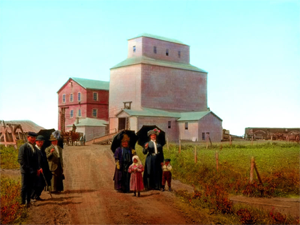
Title: Flour mill and grain elevator at Verigin, Saskatchewan 1911 In 1904, when Peter V. Verigin made this railroad hamlet the new centre of the Doukhobor commune, Verigin (today known officially as Veregin) became an important hub for the extensive alternative economic system constructed by Doukhobor labour and ingenuity. Even after most Doukhobors moved to British Columbia in 1908, the town remained the home of Verigin’s official residence in Saskatchewan and the heart of the still-considerable Doukhobor holdings of land and facilities, including a brickwork, grain elevators and a flour mill. Thanks to history professor Larry Hannant from Camosun College, our website about the death of the leader of the pacifist Doukhobor religious community in Castlegar has a great collection of images related to the history of Doukhobors in Canada. Just check out the archives section for Explosion on the Kettle Valley Line: The Death of Peter Verigin. Learn more about this history mystery. Partner News – Mt. Royal UniversityThis past semester the historians at Mount Royal University (MRU) have undertaken a number of exciting projects to enrich the History program at MRU and the teaching of History not only in Calgary, but across Canada. These projects include incorporating an innovative new pedagogy known as "Reacting to the Past" into a course on the American Revolution, organizing a teaching elementary and secondary-level history conference for Calgary-area teachers, and putting together a "mini-conference" on teaching university-level history that will take place at the annual meeting of the Canadian Historical Association at the Congress of the Social Sciences and Humanities to be held in Victoria in June, 2013. Professors at Mount Royal have also planned two new wonderful travel courses, one of which involved visiting Civil War sites and another that will focus on the history of Aboriginal peoples in southern Alberta. Reacting to the Past
In use at over 300 universities world-wide, Reacting to the Past is an innovative new pedagogy that involves incorporating elaborate role-playing games set in the past into the history classroom. The classes begin with the instructor laying out the basic issues and the historical context of the time period in which the game takes place and then students spend a number of classes taking on the personas of a variety of characters. At Mount Royal, the first game entitled "Patriots, Loyalists and Revolution in New York City 1775-76" was incorporated into a traditional course on the American Revolution. The goal of this particular game involves being in control of New York City in 1776, but along the way moderates, Loyalists and Patriots debate a number of issues in the Provincial Congress. A close reading of a number of primary documents by writers such as John Locke and Thomas Paine inform these animated discussions and students come away from the class with a number of skills--speaking, writing, critical thinking, problem solving, leadership and teamwork. All assignments are written in character, including a blog which has been the focus of interesting postings by students such as diary entries, artwork, political cartoons and good-spirited debate. More information about Reacting can be found at reacting.barnard.edu. 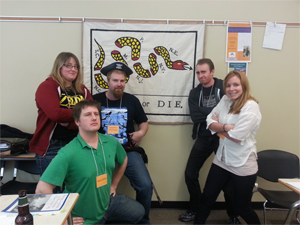
Making It Meaningful"Making it Meaningful: Historical Thinking Concepts and the Alberta Social Studies Curriculum" was held at Mount Royal University (MRU) on February 14, 2013. Building upon the success of the conferences held in 2011 and 2012, this is the third annual event hosted by MRU in conjunction with the Calgary City Teachers’ Convention. As in years past, our general aim for these annual workshops is to strengthen how history is taught at both the secondary and post-secondary levels in Calgary, thereby creating new opportunities for meaningful contact between the region’s two principal communities of history teachers. The workshop serves both educators and learners through the promotion of historical consciousness as a key outcome of the Social Studies program in Alberta, and in turn better prepares students for the advanced study of history at the post-secondary level. As such, the impact of this workshop extends well beyond those in attendance, as attendees share what they’ve learned here not only with their students but also with colleagues at their schools and in other venues such as the provincial Social Studies Conference. Our specific goal this year was to examine the unique place history occupies in the Alberta curriculum at both the junior and senior high school levels, and to consider how it can be made more meaningful for students and teachers alike through the use of the six historical thinking concepts developed by the Historical Thinking Project. The workshop began with a keynote from Tom Morton, co-author of The Big Six: Historical Thinking Concepts – a new guide to teaching history that proposes we help students "to see history as a mystery to be solved, an interpretation to be challenged, and a way to see themselves in the larger fabric of human experience." This was followed by three sets of two concurrent sessions (two in the morning and one in the afternoon), all led by Mount Royal faculty, and building on the themes identified by Mr. Morton as they relate to the Alberta curriculum specifically. 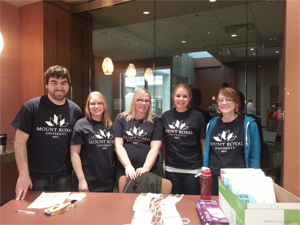
The one-day History teaching conference was a resounding success, attracting seventy-five participants, the majority of whom were elementary, junior and high school Social Studies teachers from Calgary. Education students from MRU and the University of Calgary also attended, as did MRU faculty and student volunteers. 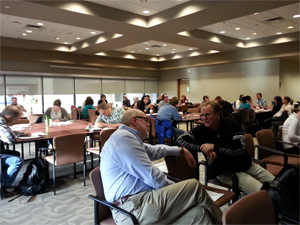
Teaching: The Historian’s Other CraftOver fifteen years ago, at a conference at Trent University, in Peterborough, Ontario, a group of feminist and women’s historians in Canada gathered to discuss, not their research, but how they teach their research to undergraduate students. Their dialogue about teaching and learning was later published as Teaching Canadian Women’s History. Since then, an increasing number of historians in Canada have turned their attention to research that focuses on teaching and learning. From the creation, in 2005, of the History Education Network to promote history education to job advertisements asking candidates to reflect upon the interplay between their research and teaching to the Canadian Historical Review publishing works by eminent historians that reflects upon their careers, the links between teaching and research are becoming increasing prevalent among those practicing the historian’s craft in Canada. 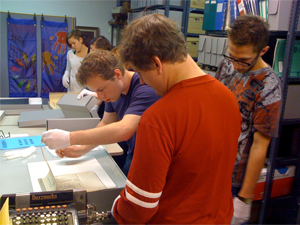
Undergraduates A number of professors at Mount Royal University decided to bring this dialogue to the corridors and classrooms of the Canadian Historical Association through a "mini-conference" akin to that sponsored by the Active History Group at last year’s Congress. The conference will include two roundtables; the first session will have historians reflect upon the lessons learned in undergraduate classrooms, while the second will have scholars assess the teaching of Indigenous histories in Canada. It is our hope that these sessions will bring attention to some of the excellent and innovative teaching done by historians in undergraduate classrooms across Canada. Experiential Learning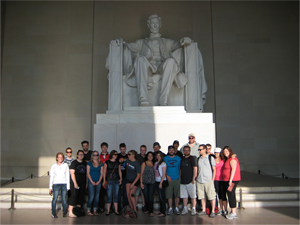
The historians at Mount Royal University have organized a number of travel study courses in the past including trips to tour the battles sites of WWI and WWI and driving across Canada by bus. This past year students also took part in a travel course on the American Civil War to learn how America was transformed by the conflict. Students engaged in historical re-enactments and travelled to numerous sites including Harpers Ferry, Antietam, Gettysburg and Appomattox. 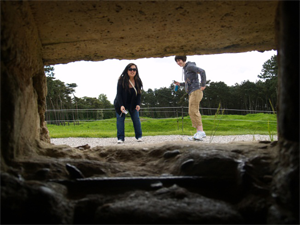
Vimy Ridge 
Civil War Site 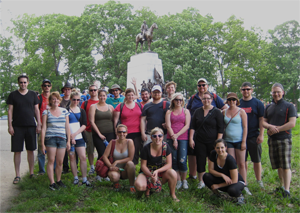
This summer, a brand new trip that focuses on the history of the Aboriginal peoples of what is now southern Alberta will take place. Topics that will be covered include Native peoples prior to European contact, the events leading to Treaty Seven, and the impact of Treaty Seven on First Nations in what is now Alberta. These events will be examined from a First Nations’ perspective. This course combines lectures in a traditional classroom setting with a week-long experiential field study component during which students will visit a number of historic sites that relate to the peoples of Treaty Seven, and they will participate in a number of First Nations’ cultural activities. |
Contact Us:admin@canadianmysteries.ca |
Subscribe to the GUMICH Gazette.
Please remove me from future GUMICH Gazette mailings.
